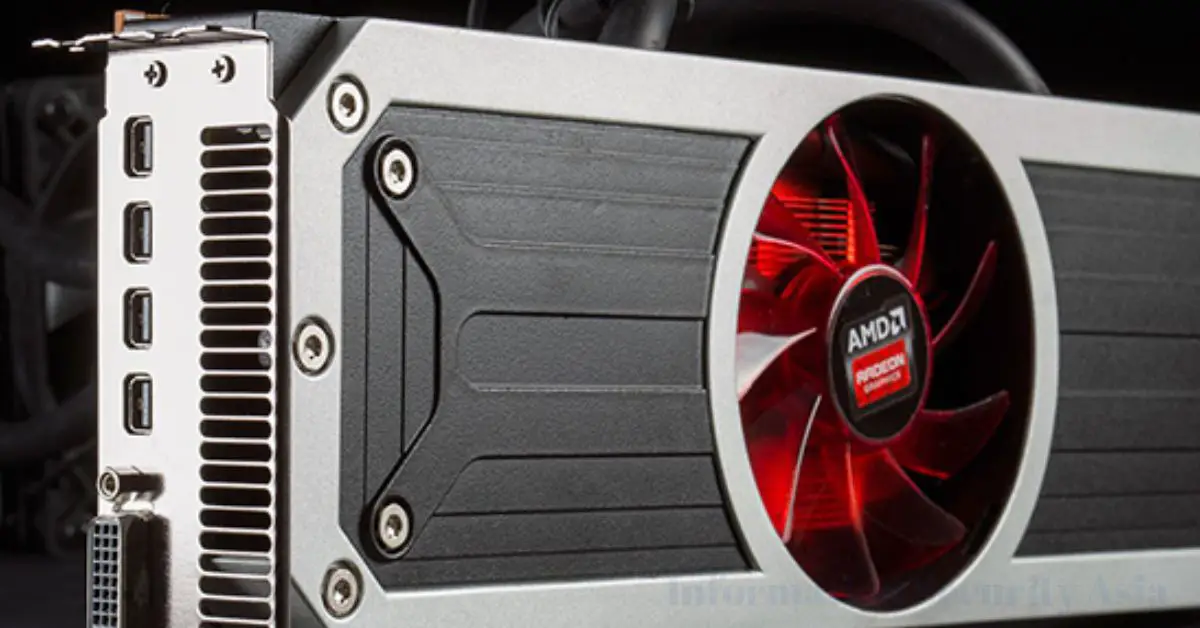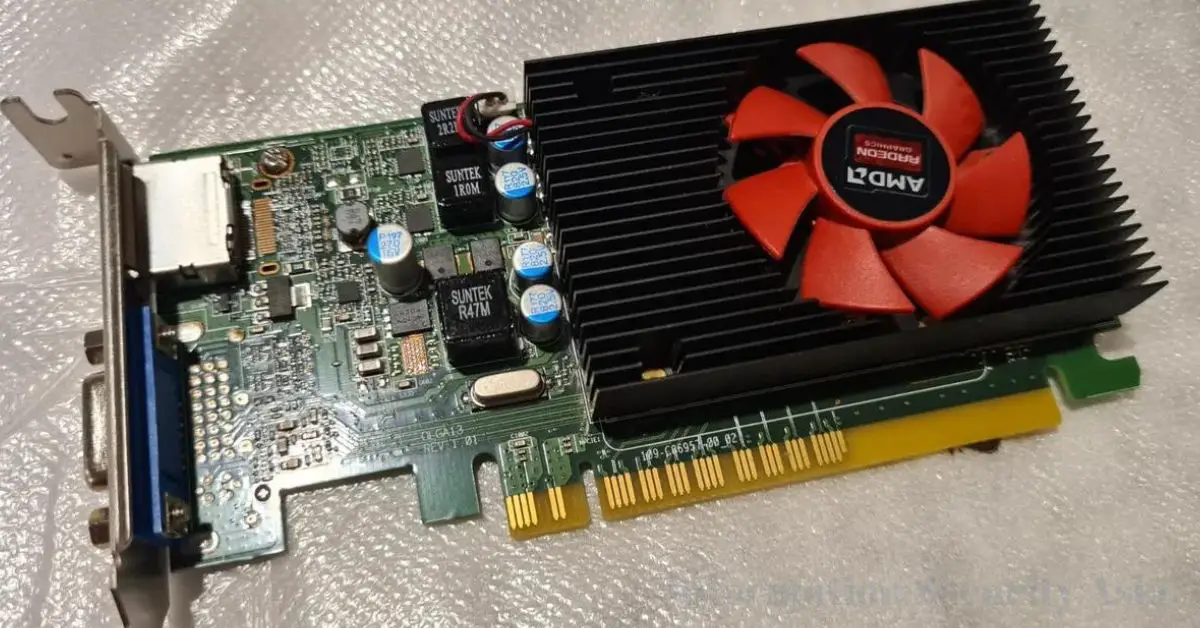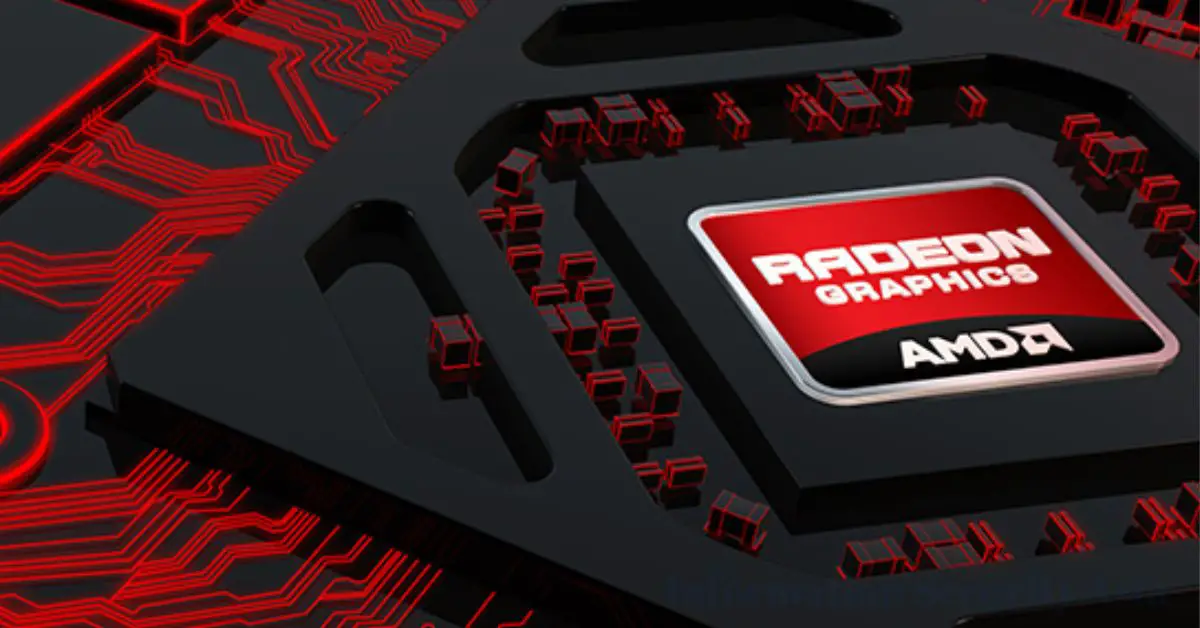The AMD Radeon R5 is a series of discrete graphics processing units (GPUs) developed by Advanced Micro Devices (AMD). Positioned within the Radeon lineup, the R5 series is primarily designed for entry-level and budget-friendly systems, offering a balance between cost-effectiveness and modest performance capabilities for everyday computing tasks and light gaming.
Contents
- Overview of AMD Radeon Series
- Evolution and Development
- AMD Radeon R5: Technical Specifications
- Comparison with Previous Versions or Competitor Products
- AMD Radeon R5: Performance Analysis
- AMD Radeon R5: Use Cases and Applications
- AMD Radeon R5: Features and Technologies
- Gaming Experience with AMD Radeon R5
- AMD Radeon R5: Power Consumption and Efficiency
- Upgradability and Future Prospects of Radeon R5
- Frequently Asked Questions
- 1. What distinguishes AMD Radeon R5 from other Radeon models?
- 2. Is AMD Radeon R5 suitable for gaming?
- 3. What are the system requirements for using AMD Radeon R5?
- 4. Can AMD Radeon R5 handle graphic design and video editing software?
- 5. Does AMD Radeon R5 support VR (Virtual Reality)?
- 6. How does AMD Radeon R5 compare to Nvidia’s GPUs in its class?
- 7. What factors affect the performance of AMD Radeon R5?
- 8. Is it worth upgrading to AMD Radeon R5 from an older GPU?
- 9. Are there any common issues or drawbacks with AMD Radeon R5?
- 10. Can AMD Radeon R5 be overclocked for better performance?
Overview of AMD Radeon Series
AMD’s Radeon series encompasses a wide range of GPUs catering to various market segments, from entry-level to high-end gaming and professional graphics solutions. The Radeon lineup includes different tiers, such as Radeon R3, R5, R7, R9, RX, and the higher-end RX Vega and RX 6000 series, each targeting specific user needs and performance requirements.
Within the Radeon series, the R5 GPUs hold significance as entry-level solutions suitable for casual gamers and users seeking basic graphics performance for everyday tasks like web browsing, multimedia consumption, and light gaming. Positioned at the lower end of the spectrum, they provide an affordable option for individuals looking for decent graphics performance without breaking the bank.
Evolution and Development
Historical Background of AMD Radeon R5
The AMD Radeon R5 series was introduced as part of the broader Radeon lineup, aiming to address the needs of users requiring basic graphics capabilities at an economical price point. Its iterations have evolved over time, incorporating advancements in GPU architecture and technology to enhance performance and efficiency.
Technological Advancements and Key Developments Over Versions
Throughout its versions, the Radeon R5 series has seen improvements in architecture, power efficiency, and features. These improvements have included advancements in manufacturing processes, shader technology, memory bandwidth, and optimizations for enhanced performance per watt. With each iteration, AMD has aimed to refine the R5 series, balancing performance gains with cost-effectiveness to cater to entry-level market segments.
Overall, the Radeon R5 series represents an essential component of AMD’s graphics card lineup, delivering accessible graphics solutions for users on a budget, albeit with performance suited more towards light computing tasks and entry-level gaming experiences.
As AMD continues to innovate, future iterations of the R5 series may bring further improvements in performance, efficiency, and feature sets to better serve the needs of budget-conscious consumers.
AMD Radeon R5: Technical Specifications
| Model | Architecture | Core Count | Base Clock (MHz) | Boost Clock (MHz) | Memory | Memory Type |
|---|---|---|---|---|---|---|
| Radeon R5 230 | GCN | 160 | 625 | – | 1GB DDR3 | Dedicated VRAM |
| Radeon R5 240 | GCN | 320 | 780 | – | 2GB GDDR5 | Dedicated VRAM |
| Radeon R5 340 | GCN | 384 | 730 | – | 2GB GDDR5 | Dedicated VRAM |
| Radeon R5 M330 | GCN | 320 | 1030 | – | 2GB DDR3 | Dedicated VRAM |
| Radeon R5 M430 | GCN | 320 | 1030 | – | 2GB DDR3 | Dedicated VRAM |
| Radeon R5 435 | GCN | 512 | 800 | – | 2GB GDDR5 | Dedicated VRAM |
| Radeon R5 520 | GCN | 320 | 1024 | – | 2GB DDR3 | Dedicated VRAM |
| Radeon R5 530 | GCN | 512 | 1024 | – | 2GB GDDR5 | Dedicated VRAM |
| Radeon R5 620 | Polaris (GCN 4th) | 512 | 625 | – | 2GB GDDR5 | Dedicated VRAM |
| Radeon R5 720 | Vega | 512 | 720 | – | 2GB GDDR5 | Dedicated VRAM |
| Radeon R5 (iGPU) | Various | Varies | Varies | Varies | Varies | Shared System Memory |
Note: This table provides a generalized overview of various Radeon R5 models. Actual specifications may differ between manufacturers and specific versions. Additionally, integrated graphics (iGPU) models use system memory (RAM) as VRAM, hence the variable memory configurations. The boost clock may not be available or specified for some models.
Architecture
The Radeon R5 series is built on various architectures, including some based on older GCN (Graphics Core Next) architecture and others on more recent architectures like the Radeon RX Vega or RDNA. Specific models might differ in the architecture they’re based on, which impacts their performance and efficiency.
Core Count
The number of cores in Radeon R5 GPUs can range widely. Entry-level models may feature around 128 to 384 stream processors (or shader cores), while variations in higher-end integrated or dedicated GPUs might have more, up to around 512 or more.
Clock Speeds
Clock speeds can also vary depending on the specific model and whether it’s a desktop or mobile GPU. Base clock speeds for Radeon R5 GPUs typically range from around 600 MHz to 1 GHz or higher, with boost clocks reaching up to 1.5 GHz in some models.
Memory
Radeon R5 GPUs often utilize system memory (RAM) as VRAM (shared memory) in integrated graphics configurations, while dedicated versions may have their own onboard VRAM. The VRAM capacity can range from 1GB to 4GB in dedicated versions, while shared memory configurations might utilize system memory, which can vary based on the installed RAM in the system.
Comparison with Previous Versions or Competitor Products
Comparing Radeon R5 GPUs across various versions or with competitor products involves considering performance metrics, power efficiency, and features:
- Evolution: Successive generations of Radeon R5 GPUs have generally seen improvements in performance and efficiency due to architectural enhancements and manufacturing advancements. Newer versions tend to offer better performance-per-watt ratios compared to their predecessors.
- Competitor Comparison: Radeon R5 GPUs typically compete with entry-level offerings from NVIDIA’s GeForce series or integrated graphics solutions from Intel. Comparing performance, power efficiency, and pricing across these offerings can help gauge their relative strengths and weaknesses.
- Performance: Radeon R5 GPUs are entry-level and are suitable for light gaming and basic productivity tasks. When comparing with older versions, newer iterations tend to offer improved performance due to architectural enhancements.
AMD Radeon R5: Performance Analysis
Gaming Performance of AMD Radeon R5
The gaming performance of AMD Radeon R5 GPUs typically caters to entry-level gaming and is suitable for running less demanding titles at lower resolutions and settings. However, these GPUs might struggle with modern, graphically demanding games at higher settings due to their entry-level nature.
Benchmark Results and Real-World Performance Insights:
- Benchmark results for Radeon R5 GPUs show performance metrics across various games and synthetic tests. They generally indicate that these GPUs achieve playable frame rates in older or less demanding games at lower settings. However, they may struggle with newer, more graphically demanding titles, resulting in lower frame rates or the need to play at very low settings for smoother gameplay.
- Real-world performance aligns with benchmark results. Users can expect satisfactory performance in older or less demanding games such as esports titles (e.g., CS:GO, League of Legends) at lower to medium settings. However, for newer AAA games, they might need to compromise on resolution and settings to maintain playable frame rates.
AMD Radeon R5: Use Cases and Applications
Ideal Scenarios for Utilizing AMD Radeon R5 Graphics
- Casual Gaming: Radeon R5 GPUs are suitable for casual gamers who play older or less graphically demanding games and are content with lower settings and resolutions.
- Productivity and Multimedia: These GPUs work well for everyday tasks, multimedia consumption, streaming videos, and light photo or video editing. They enable smoother performance for such applications compared to integrated graphics solutions.
Compatibility with Different Software and Gaming Genres
- Software Compatibility: Radeon R5 GPUs are compatible with a wide range of software applications. They handle productivity suites, web browsing, media playback, and light content creation tasks with ease.
- Gaming Genres: They perform better in less demanding gaming genres such as indie games, older titles, and esports games. However, for more demanding genres like AAA titles or graphically intensive games, users might need to lower settings significantly for playable frame rates.
AMD Radeon R5: Features and Technologies
Noteworthy Features
- Unified Video Decoder (UVD): UVD technology assists in decoding and playback of high-definition video content, ensuring smooth video playback and improved multimedia experiences.
- Power Efficiency: Radeon R5 GPUs emphasize power efficiency, making them suitable for laptops and low-power desktop configurations, ensuring decent performance without excessive power consumption.
- AMD App Acceleration: This technology enhances performance in supported applications by leveraging the GPU’s processing power, improving tasks like video transcoding and image manipulation.
- Vulkan and DirectX Support: Radeon R5 GPUs typically support modern graphics APIs like Vulkan and DirectX, enabling compatibility with a wide range of games and applications.
Unique Technologies Integrated into the GPU
- AMD FreeSync: Some Radeon R5 models may support FreeSync, which synchronizes the monitor’s refresh rate with the GPU’s frame rate, reducing screen tearing and providing a smoother gaming experience, albeit within the GPU’s performance limitations.
- AMD Eyefinity: In some higher-end models, Eyefinity allows users to connect multiple displays for an expanded viewing experience, enhancing productivity and multitasking capabilities.
Gaming Experience with AMD Radeon R5
User Experiences and Reviews
User experiences with AMD Radeon R5 GPUs generally reflect satisfaction for everyday computing tasks and moderate gaming performance. However, users often highlight its limitations when running graphically demanding games at higher settings, where the GPU might struggle to provide smooth frame rates.
Popular Games and Performance
- Performance on Older or Less Demanding Games: Radeon R5 GPUs perform well in older or less demanding games, providing playable frame rates at lower to medium settings. Games like League of Legends, Dota 2, CS:GO, Minecraft, and older titles from various genres run reasonably well on these GPUs.
- Challenges with Demanding Games: Newer and graphically demanding titles such as AAA games often pose challenges for Radeon R5 GPUs. Users may need to significantly lower settings and resolution to achieve playable frame rates, which might impact visual quality and gaming experience.
While Radeon R5 GPUs offer an affordable option for entry-level gaming and everyday computing, they have limitations with modern AAA games and graphically demanding applications. Users looking for smoother performance in high-end gaming might need to consider higher-tier GPUs for a better gaming experience.
AMD Radeon R5: Power Consumption and Efficiency
AMD Radeon R5 GPUs are designed with a focus on power efficiency, particularly in the entry-level and integrated graphics segments. These GPUs typically exhibit moderate power requirements, making them suitable for laptops, small form factor desktops, and budget-oriented systems.
Comparatively, Radeon R5 GPUs tend to have lower power consumption compared to higher-tier GPUs within AMD’s own lineup (like the RX series) or when contrasted with equivalent offerings from competitors like NVIDIA in the entry-level GPU segment. Their emphasis on efficiency allows these GPUs to operate within thermal and power constraints in various computing environments.
While power consumption specifics can vary based on the specific model, architecture, and manufacturing process, Radeon R5 GPUs generally offer a balance between performance and power efficiency, catering to users who prioritize modest graphics performance without a significant impact on power consumption.
Comparison with Other GPUs in Terms of Power Consumption:
When compared to higher-end GPUs within AMD’s lineup or with equivalent offerings from competitors, Radeon R5 GPUs typically demonstrate lower power consumption. This lower power draw enables their integration into systems with limited power supply capacities, as well as in portable devices like laptops where battery life is a crucial factor.
In contrast to mid-range or high-end GPUs that demand more power due to higher performance capabilities, the Radeon R5 series stands out for its relatively conservative power requirements, aligning well with the needs of entry-level users seeking efficient graphics solutions without compromising significantly on power consumption.
Upgradability and Future Prospects of Radeon R5
Scalability and Potential for Upgrades
Radeon R5 GPUs, especially those integrated into laptops or low-profile desktops, often have limited upgradability due to their embedded nature. However, in some desktop configurations with dedicated graphics cards, users might have options to upgrade to higher-tier GPUs within the Radeon lineup or other compatible GPUs, depending on their system’s compatibility and available resources.
Future Expectations and Prospects for Radeon R5 Series
Looking ahead, the future prospects for the Radeon R5 series might involve continued optimization for power efficiency and performance improvements within the entry-level segment. However, with advancements in technology and the evolution of more demanding software and games, the Radeon R5 series might face limitations in keeping up with the requirements of future, more demanding applications.
As newer technologies emerge and computing demands evolve, AMD may eventually phase out the Radeon R5 series in favor of more advanced architectures that cater to evolving user needs and higher performance expectations. This could entail the introduction of newer entry-level GPUs with enhanced performance and efficiency to replace or succeed the Radeon R5 series.
Frequently Asked Questions
1. What distinguishes AMD Radeon R5 from other Radeon models?
AMD Radeon R5 is positioned as an entry-level GPU within the Radeon lineup, designed for basic graphics needs such as casual gaming, multimedia tasks, and everyday computing. It features lower performance capabilities compared to higher-tier models like the R7, R9, or RX series, making it more affordable but less powerful in terms of gaming and graphics performance.
2. Is AMD Radeon R5 suitable for gaming?
Yes, the AMD Radeon R5 is suitable for gaming, particularly for older or less demanding games at lower settings. However, it might struggle with modern, graphically intensive titles at higher settings due to its entry-level nature.
3. What are the system requirements for using AMD Radeon R5?
The system requirements for AMD Radeon R5 GPUs can vary based on the specific model and whether it’s integrated or dedicated. Generally, it requires a compatible motherboard or laptop, a power supply unit meeting the GPU’s power demands, and drivers compatible with the operating system being used.
4. Can AMD Radeon R5 handle graphic design and video editing software?
The Radeon R5 series can handle basic graphic design and video editing software to a certain extent. However, its performance might be limited for complex tasks due to its entry-level nature. It might struggle with high-resolution video editing or demanding graphic design applications.
5. Does AMD Radeon R5 support VR (Virtual Reality)?
The AMD Radeon R5 series might not be well-equipped to handle VR (Virtual Reality) due to its lower performance compared to the requirements of most VR applications. While some models might technically support VR, the experience might not be optimal or satisfying due to performance limitations.
6. How does AMD Radeon R5 compare to Nvidia’s GPUs in its class?
When comparing AMD Radeon R5 to Nvidia’s GPUs in a similar entry-level class, they generally offer comparable performance within their respective segments. The choice between the two often comes down to personal preferences, specific model comparisons, and availability.
7. What factors affect the performance of AMD Radeon R5?
Performance of AMD Radeon R5 GPUs can be affected by factors like the specific model, clock speeds, available VRAM, thermal constraints, system configuration, driver optimizations, and the demands of the software or games being run.
8. Is it worth upgrading to AMD Radeon R5 from an older GPU?
Whether it’s worth upgrading to AMD Radeon R5 from an older GPU depends on your specific needs and the performance gap between your current GPU and the Radeon R5. If you require better performance for basic gaming or computing tasks, it might be a worthwhile upgrade. However, for significant gaming or high-performance needs, considering a higher-tier GPU would be more suitable.
9. Are there any common issues or drawbacks with AMD Radeon R5?
Common issues with AMD Radeon R5 might include limitations in handling modern, graphically demanding games at higher settings, limited VRAM capacity in some models, and lower performance compared to higher-tier GPUs.
10. Can AMD Radeon R5 be overclocked for better performance?
While some Radeon R5 models may support overclocking, it’s important to note that not all GPUs are designed with substantial headroom for overclocking due to their entry-level nature. Overclocking might provide marginal performance gains but could also lead to increased heat generation and reduced GPU lifespan if not done properly, and it may not significantly enhance performance due to hardware limitations.
The AMD Radeon R5, with its specific features and performance capabilities, provides a significant option in the GPU market. Whether for gaming, multimedia tasks, or casual use, understanding its technical aspects and real-world performance aids in making informed decisions about its suitability for various user needs.

Information Security Asia is the go-to website for the latest cybersecurity and tech news in various sectors. Our expert writers provide insights and analysis that you can trust, so you can stay ahead of the curve and protect your business. Whether you are a small business, an enterprise or even a government agency, we have the latest updates and advice for all aspects of cybersecurity.





